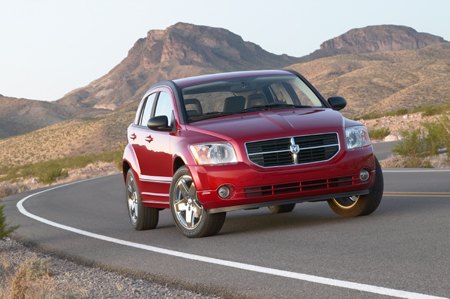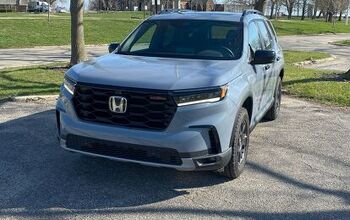Editorial: The Truth About DaimlerChrysler Product Development
[The following is another contribution from our anonymous ChryCo contact] I worked for Chrysler for many years in Product Development as a Design Engineer though I no longer do. I saw comments on a recent post by another employee asking why, when Chrysler merged with Daimler, did they still share platforms with Mitsubishi?
There was always such hope in the platform sharing at the start of every project (JS – Sebring (Mitsubishi), PM – Caliber (Mitsubishi), WK – Grand Cherokee / WD – Durango (Daimler). By sharing the same platform we were supposed to achieve economies of scale, reducing the overall initial investment and engineering effort. Ultimately, those savings vanished during the development of the platform.
In truth, inter-company platform sharing—whether with Mistubishi or Daimler—created a power struggle, as the platform’s respective “owners” struggled to adapt their respective vehicle’s suitability to their local market. The inevitable end result: compromised design AND marginal cost savings.
The Caliber / Sebring are too narrow for the U.S. market (Japanese market cars are more narrow), the Caliber’s suspension system has too much drive shaft angle due to Mitsubishi inherited design optimized for their engines (allowing torque steer). I didn’t work on that platform. But I believe that Mitsubishi dropped out of co-development early after the decision was made to share, resulting in less savings. But I know for a fact that the cost savings initially planned were not fully realized.
I did, however, work on the new Grand Cherokee.
This product was co-developed with Mercedes alongside their next generation ML and GL vehicles. From Chrysler’s perspective this platform made a lot of sense. New crash regulations meant the current Jeep platform would have needed substantial upgrades to be viable. The new Mercedes platform also addressed other issues with the current Grand Cherokee platform: small rear door openings, uncomfortable rear seats, limited wheel size, larger engine box for future emissions/crash.
Mercedes wanted to spread their development costs over Chrysler’s volume to lower piece prices. Internally, we knew that Mercedes gained more than Chrysler from this co-development deal. Our costs were higher than if we had clean sheeted it from the beginning.
What initially started off with many common areas (brakes, suspension etc), eventually resulted in a few common parts and only some savings. The future Grand Cherokee has a small glovebox due to the straight crosscar beam Mercedes engineers use to enhance their vehicle’s crash/stiffness. The cross car beam was eventually cast in magnesium by Chrysler vs steel by Mercedes due to divergence of design goals. Steel is good for strength for side crash or anti-vibration stiffness for improved steering column shake, while cast magnesium normally results in great packaging (big glovebox), costs more, and is lighter. Because the airbag had already been packaged and it couldn’t be moved (its location affects crash performance), the glove box size for the Jeep was already compromised by the initial design.
Mercedes’ focus was their uncompromising design objectives. Chrysler’s was usually cost or off road performance. Mercedes would rarely yield to Chrysler desires for cost savings, and the two teams would go their separate ways. Mercedes wanted a saddle design fuel tank (one tank shaped like a saddle with two fuel pumps at the lowest points) for a large fuel capacity, and for packaging for dual exhaust on the six cylinder. Chrysler wanted a single fuel tank for cost savings, but with a smaller capacity and only one pump. Divergence.
Mercedes is willing to package a mini-spare on their vehicle. Chrysler requires a full size spare as optional for SUV’s. Result: divergence in the rear end of the vehicle. A common floorpan stamping suffered a similar fate. The stampings were supposed to be the same part number (i.e. identical). But differences in small holes or studs in the body for mounting things (e.g. electrical components) quickly separated these parts.
The overarching problem: there was never alignment between the philosophies of the teams developing the vehicle. Mirror that on the Daimler acquisition of Chrysler. Technology transfer could only occur from Mercedes to Chrysler. They could donate their high cost platform to Chrysler with impunity but if they jointly developed a program, they risked their lineage. Who wants a Mercedes designed by Chrysler?
Chrysler on the other hand had to significantly redesign / retool a Mercedes platform to lower cost. On the surface the merger made sense but in reality, the two weren’t reconcilable. Ipso facto.
More by Admin
Latest Car Reviews
Read moreLatest Product Reviews
Read moreRecent Comments
- Theflyersfan The wheel and tire combo is tragic and the "M Stripe" has to go, but overall, this one is a keeper. Provided the mileage isn't 300,000 and the service records don't read like a horror novel, this could be one of the last (almost) unmodified E34s out there that isn't rotting in a barn. I can see this ad being taken down quickly due to someone taking the chance. Recently had some good finds here. Which means Monday, we'll see a 1999 Honda Civic with falling off body mods from Pep Boys, a rusted fart can, Honda Rot with bad paint, 400,000 miles, and a biohazard interior, all for the unrealistic price of $10,000.
- Theflyersfan Expect a press report about an expansion of VW's Mexican plant any day now. I'm all for worker's rights to get the best (and fair) wages and benefits possible, but didn't VW, and for that matter many of the Asian and European carmaker plants in the south, already have as good of, if not better wages already? This can drive a wedge in those plants and this might be a case of be careful what you wish for.
- Jkross22 When I think about products that I buy that are of the highest quality or are of great value, I have no idea if they are made as a whole or in parts by unionized employees. As a customer, that's really all I care about. When I think about services I receive from unionized and non-unionized employees, it varies from C- to F levels of service. Will unionizing make the cars better or worse?
- Namesakeone I think it's the age old conundrum: Every company (or industry) wants every other one to pay its workers well; well-paid workers make great customers. But nobody wants to pay their own workers well; that would eat into profits. So instead of what Henry Ford (the first) did over a century ago, we will have a lot of companies copying Nike in the 1980s: third-world employees (with a few highly-paid celebrity athlete endorsers) selling overpriced products to upper-middle-class Americans (with a few urban street youths willing to literally kill for that product), until there are no more upper-middle-class Americans left.
- ToolGuy I was challenged by Tim's incisive opinion, but thankfully Jeff's multiple vanilla truisms have set me straight. Or something. 😉


































Comments
Join the conversation
My impression is that Chrysler's design and engineering teams in the pre-merger era were excellent, and their biggest problem was Eaton, who fostered a climate where the accountants would try to "de-cost" things after they were already designed, in order to save a few bucks. (According to Bob Sheaves, this was the direct origin of notorious problems like the Neon's exhaust 'donut' and head gasket failures and the original LH cars' inadequate HVAC.) This strikes me as a management problem, because while you obviously have to keep costs in line, the cost controls were never implemented with any kind of holistic view of the goals for the product or their long-term impact on warranty costs, etc. Sheaves suggests that the problem at the time of the merger was that Daimler management saw some legitimate problems -- like high warranty costs -- but the platform-team philosophy on which Chrysler operated at that point (designed, I believe, by François Castaing) was so anathema to Daimler's culture that they didn't even try to fix it. Rather than seeing a basically strong system that had some glitches that needed fixing, the Germans saw the platform-team approach (which, among other things, gave lower-level managers and engineers an unusual level of authority over their product) as anarchy, a sign that the Americans just didn't know what the @%&( they were doing. When engineers and designers tried to exert the authority that they had previously been given, the Daimler managers saw it as gross insubordination. Before long, anyone who said "No" to a German was being escorted out of the building. The Neon strikes me as a tragic but typical case. Like the original Saturn SL, it was a rare attempt to actually compete with the Japanese imports on their own terms (which Chrysler hadn't done since the original Horizon), and in some respects, it came really close, only to be undone by flaws largely attributable to short-sighted cost cutting. (The reliability problems are the obvious ones, but there are also oddities like the elderly 3-speed autobox, and the fact that you could have power front windows, but not rear ones.) If they hadn't let it languish, they could have made it into a very competitive product. We must say this for the Neon, though. Whatever its other virtues (which it has) and faults (which it also has), it is one of the only American cars in its class to actually be profitable. Despite its lowball pricing, despite the warranty costs they ended up incurring, Chrysler actually made money on the Neon. By comparison, GM and Ford's longstanding resistance to decent small cars was (and is) attributable to their conviction that they can't make money at it -- even though the Erika-platform Ford Escort was the best-selling model in America for many years, Ford's profits on it were minimal. The bitch of it is that Chrysler could have fixed the Neon's major weaknesses and still made a profit on it; they just chose not to, for which we may thank Bob Eaton, as well as Daimler-Benz.